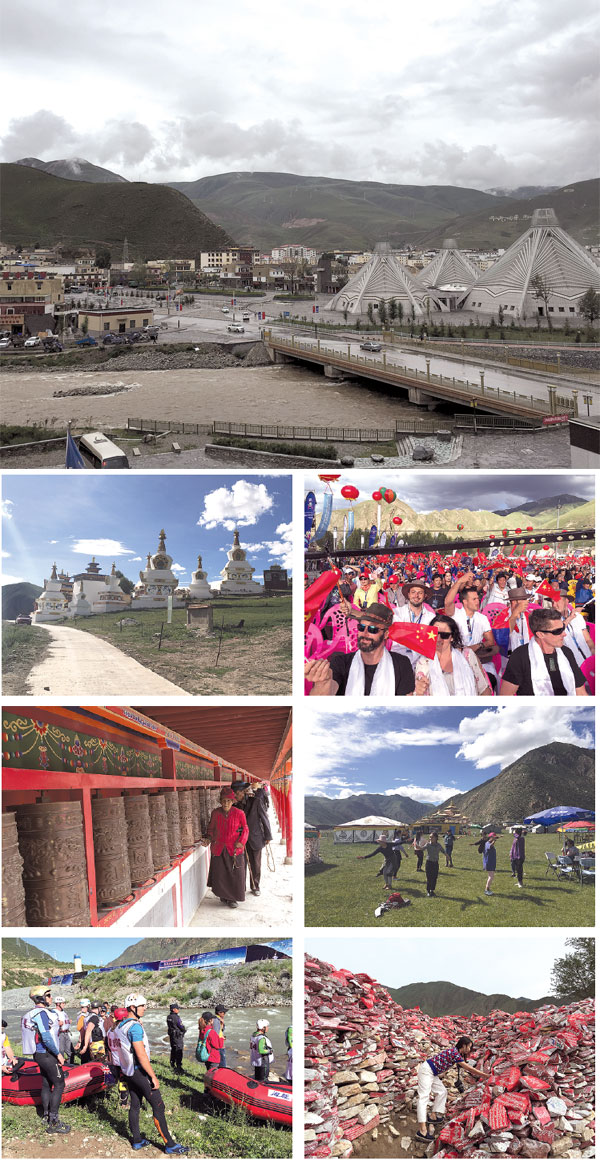Strong whiff of ethnic culture
Updated: 2016-08-13 06:35
By Yang Feiyue(China Daily)
|
||||||||
It was destroyed by an earthquake, but the disaster has brought new attention to the once obscure outpost, which unwittingly finds itself attracting curious visitors
It's a city built amid mountain ranges. Tucked away from the Qinghai-Tibet Plateau, the city grabbed the world's attention when a massive earthquake convulsed it in 2010.
I did not notice any devastation caused by the earthquake during my trip there in late July.
|
Clockwise from top: A glimpse of downtown area of Yushu city; the opening ceremony of Yushu international rafting competition; visitors play at a grasslands resort; a visitor piles on a Mani stone; International rafters compete against each other; locals turn prayer wheels at the Jiana Mani stone square; the sky burial site. Photos by Yang Feiyue / China Daily |
Brown-brick buildings, mostly two or three stories high, stand near each other stretching all the way to the base of reclining green mountains behind them.
"The region took the brunt of the earthquake and almost everything was rebuilt," a tour guide tells us.
But the earthquake put Yushu on the map. "Now, one section of visitors are those who contributed to Yushu's post-earthquake reconstruction, who want to see how it is faring," the guide says.
"The rest are pilgrims or those who visit simply to savor the grasslands, the blue sky, the white clouds, and its Tibetan culture," he tells us.
A large section of the local residents are from the Tibetan, Hui and Mongolian ethnic groups, giving the place an exotic flavor.
Prayer flags flutter next to a Buddhist tower with a sky burial platform near the Princess Wencheng Temple.
A few red-robed monks sit on a slope a little away from the tower.
"Locals still perform sky burials," says Yixi Songbao, who opened a summer resort nearby.
The procedure is that monks prepare the bodies, and then scavenging animals, such as carrion birds, feed on them.
"We feel it's only natural for us to return to nature after death," says Songbao, adding that he would want the ritual performed for him.
Roughly a half-hour drive away, a large group of locals dressed in typical Tibetan costumes gather at the Jiana Mani stone square.
They go around the square and turn big prayer wheels along the way.
Suonan Zhande, the deputy head of the Yushu culture, sports and tourism authority, says: "Usually they go around six times and pray."
The square in Xinzhai village, built more than 1,700 years ago, is believed to have the largest pile of Mani stones in the world.
The polychromatic Mani stones have a six-syllable Buddhist mantra inscribed on them.
"Locals get the stones caved with the mantra and place them in the square whenever they visit it," he adds.
A 40 minute-drive from the square takes you to Leba Valley and cliff carvings featuring men and Buddha figures.
The carvings have been weathered over the years, but they are clear enough for you see the whole picture featuring devotion to Buddha.
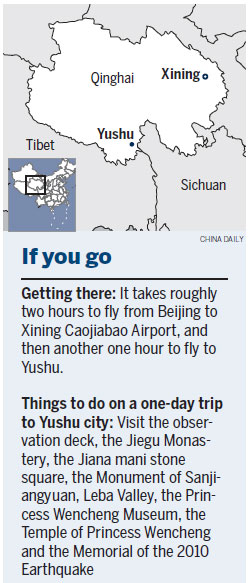
The carvings are believed to date from the mid-seventh century AD, when Buddhism was introduced to Tibet.
Locals believe that they could be left by Princess Wencheng of the Tang Dynasty, who married the Tibetan King Songtsen Gampo in AD 641.
Stones of various sizes bearing Buddhist canons in the Tibetan language are also be found along the way to the valley.
Many of the inscriptions were done by pilgrims to show their respect for Princess Wencheng, says Zhande, adding: "Whenever the river washes the stones, it is considered that the canon is read."
The Princess Wencheng Temple is 20 kilometers from the valley. A large number of prayer flags cover the mountains next to the temple. Stones around the temple also carry Tibetan mantras.
I see many people take their shoes off when entering the temple.
Yixi Songbao's resort, the Xiawozi Summer Pasture, is a few minutes' drive from the temple, and he invites us to take a break there.
There, I enjoy local snacks - steamed buns stuffed with beef, blood sausage and air-dried beef.
Yixi Songbao, who opened the place three years ago and pays 40,000 yuan ($5,99) a year for the use of the grasslands, says: "It's close to several major historical sites, including the Leba Valley and the sky burial platform."
Songbao's business did not fare well last year, as locals didn't make much money from the sale of Chinese caterpillar fungus, a valuable ingredient in traditional Chinese medicine.
But things have improved this year.
"We've had many diners coming directly from the airport," he says.
Business has been brisk since July, with more than 150 visitors daily.
Meanwhile, an international rafting event, a horse race and the upcoming Sanjiangyuan national park has helped him make up his mind about staying invested in the local tourism sector. He also plans to open a facility for winter visitors soon.
The location of the city means that tourism only lasts for three months every year - from July to September - when weather is at its warmest. During the rest of the year, it is too cold.
Therefore, all the thrills and spills are packed into those three months.
Among the highlights are the grassland music festival where Tibetan singers are invited to perform, a horse racing festival and an international rafting event, which can attract up to 150 participants from overseas.
An international hiking event will also be staged next year, and the route will cover major attractions, including the Mani stone square and Leba Valley.
A highway between Yushu and the capital city Xining will become officially operational by October this year, cutting the road journey to the city from Xining to a little more than six hours.
Local officials also expect more tourists after the Sanjiangyuan national park is completed in two years.
Yangfeiyue@chinadaily.com.cn
(China Daily 08/13/2016 page18)
- Nepal's newly elected PM takes oath
- Texas gun law worries incoming students
- China vows to deepen economic, trade cooperation with ASEAN
- Fire guts Emirates jet after hard landing; 1 firefighter dies
- Egypt's Nobel-laureate scientist dies of illness in US
- THAAD muscle flexing unmasks anxiety over declining hegemony
 Phelps writes new page with four wins in same event
Phelps writes new page with four wins in same event
 Ma Long wins Chinese derby to edge defending champion
Ma Long wins Chinese derby to edge defending champion
 Yingjing County's hand-crafted 'black pottery'
Yingjing County's hand-crafted 'black pottery'
 Ten photos from around China: Aug 5 – 11
Ten photos from around China: Aug 5 – 11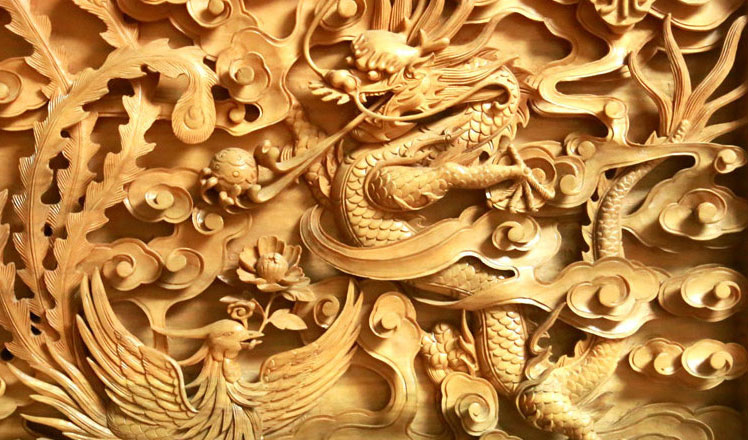
 Inheritor of Songshan wood carving in C China
Inheritor of Songshan wood carving in C China
 "Born in China": Wild and fun
"Born in China": Wild and fun
 Top 10 foreign destinations for Chinese tourists
Top 10 foreign destinations for Chinese tourists
 Ding Ning wins table tennis gold in Rio
Ding Ning wins table tennis gold in Rio
Most Viewed
Editor's Picks
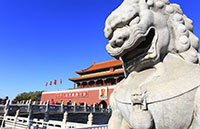
|
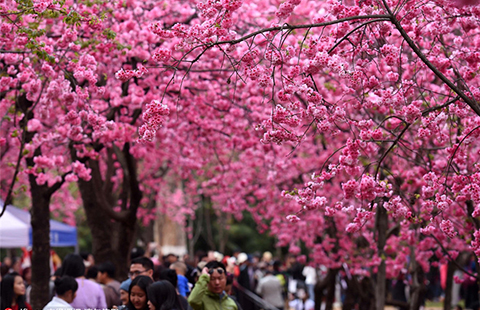
|
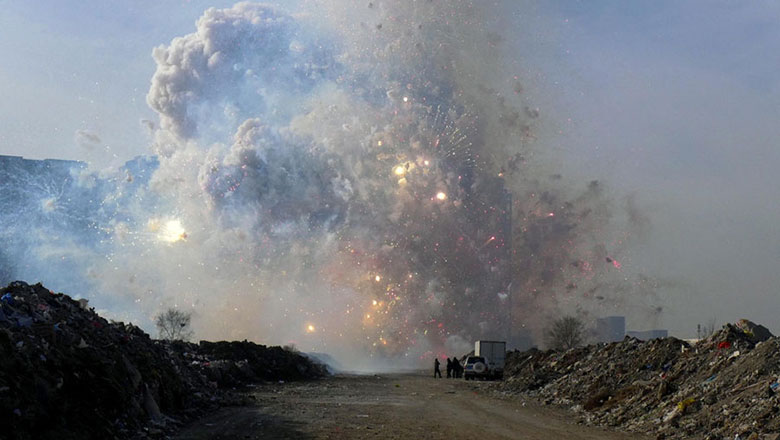
|

|
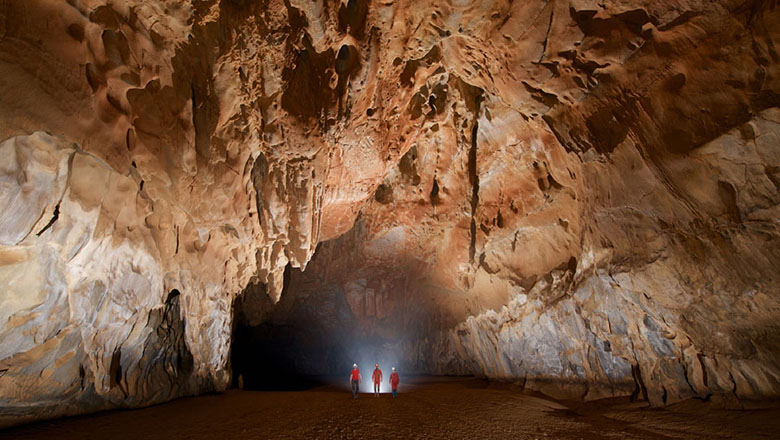
|

|
Today's Top News
Phelps puts spotlight on cupping
US launches airstrikes against IS targets in Libya's Sirte
Ministry slams US-Korean THAAD deployment
Two police officers shot at protest in Dallas
Abe's blame game reveals his policies failing to get results
Ending wildlife trafficking must be policy priority in Asia
Effects of supply-side reform take time to be seen
Chinese State Councilor Yang Jiechi to meet Kerry
US Weekly

|

|
